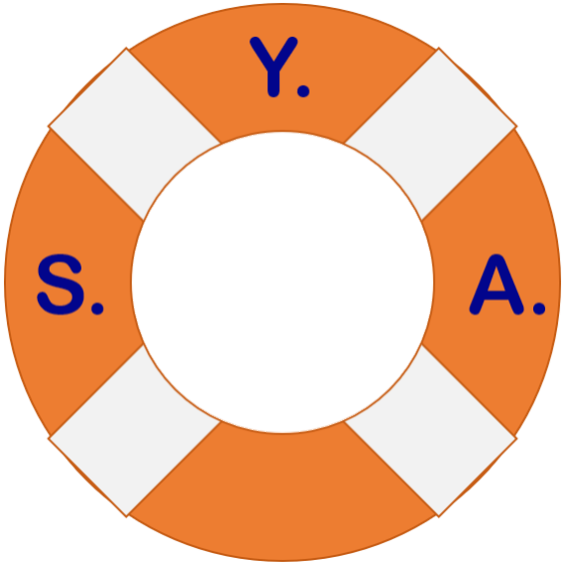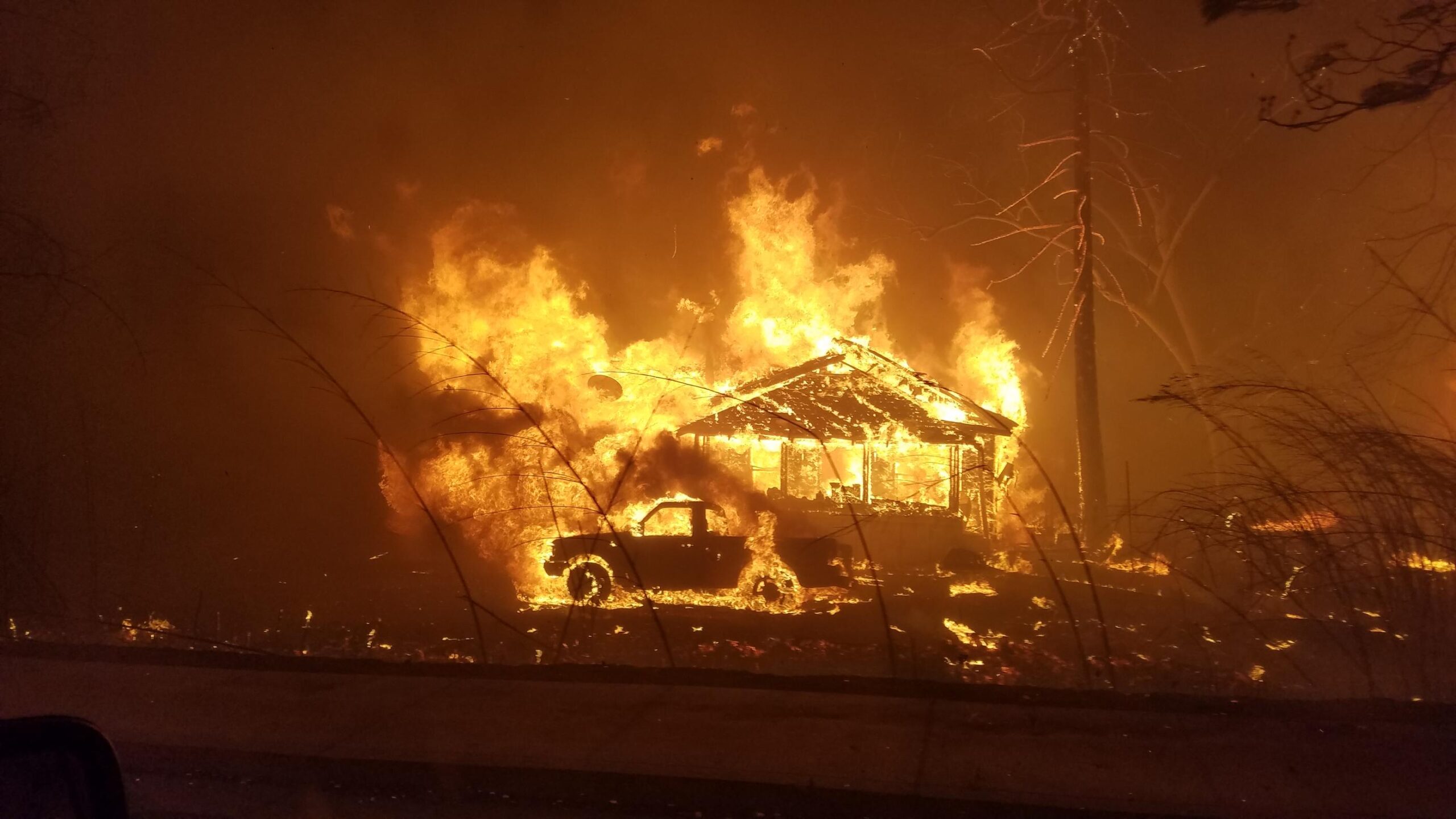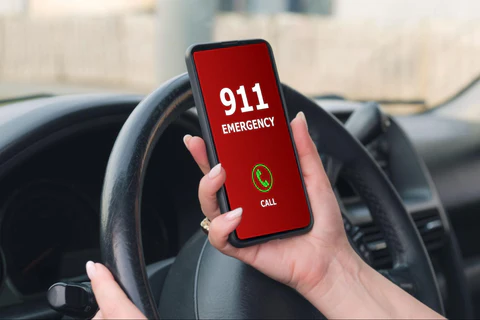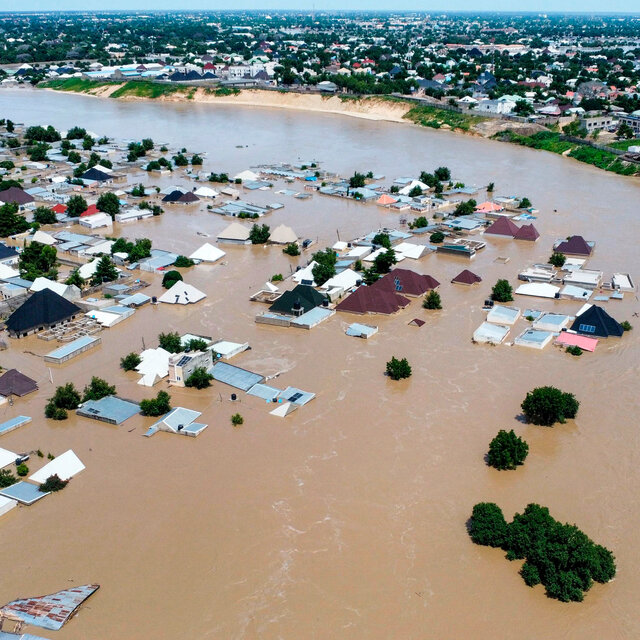Wildfires have become an expected threat each summer. With the on-going mega-drought consuming the western US, vegetation is dryer than ever before. Read on to see how much danger you might be in.

It doesn’t take much to spark a fast-growing wildfire. While lightning and wind is to blame for some fires, 90% of wildfires are human caused.
Common Sense Isn’t Common
Many of these can easily be avoided if people just had a little common sense:
- Don’t discard your lit cigarette into dry grass or other combustible materials. Seems obvious right? That doesn’t stop dumbasses from doing it. They don’t realize as they are zipping down the road that flicking their cigarette bud out the window can easily land in dry grass on the side of the road.
- Don’t have an open fire when camping or backpacking. Most state and national parks in the west currently have a ban on all open fires due to the extreme risk of wildfire. Again, seems like common sense? Yet, almost all fires that start in one of these parks can be traced back to an open fire that was not allowed, left unattended or not completely put out before leaving.
- Don’t light off fireworks. Here in Utah we have had several instances of fires started by reckless use of fireworks during extreme drought conditions. All were very close to homes and subdivisions that were barely saved from destruction.
- Don’t go target shooting in dry areas. This is another cause for many fires here in Utah. Hot lead ricochets into dry grass and it’s off to the races to try to stop it before it gets out of control.
- Don’t let safety chains drag on the ground. The safety chain of travel trailer or flatbed that drags on the ground causes sparks that can easily ignite dry grasses along the road.
- Don’t do a ‘controlled burn’ in drought conditions. There is no such thing as a controlled burn when you don’t have the resources to stop a fire from getting out of control due to unpredictable weather conditions.
Dumbass Quotient
Everyone one of these scenarios is preventable. I blame these on what I call the dumbass quotient. These people exhibit one or more (or all) of the following traits: People that…
- Think they are smarter than everyone else.
- Think that the rules don’t apply to them.
- Just don’t think about their actions.
- Have no empathy for others.
- All of the above
Until they cause a major incident, and then they cry “I didn’t know, I didn’t think this would happen!” They should have stopped with “I didn’t think” because that explains everything. If only we could lock these idiots away, unfortunately it would encompass more than half the population. A discussion for another time.
Wildfire Stats
It’s because of these morons that the rest of us need to be prepared to deal with the consequences of their ignorance and stupidity when it affects us. Here are the numbers of wildfires from the United States the past 11 years. Do the math yourself…90% of these were human-caused. The remaining 10% were natural from lightning or wind knocking down trees on power-lines.


Not only a summer problem
Unfortunately, wildfires are not limited to the summer months anymore. Boulder, CO experienced a fast-moving wildfire 4 days before Christmas last year that ended up being the most destructive wildfire in state history in terms of buildings destroyed.
It happened so fast due to extreme winds fanning the flames that people were completely caught off guard. Watch the video of families eating dinner in a pizza restaurant when the fire surprised them, as they raced to evacuate and the aftermath of the destruction.
Check out the National Interagency Fire Center (NIFC)
The NIFC website is filled with excellent data, news and information. The main page shows the current status of wildfires across the country. It also includes new data regarding a troubling trend: Drones. I know people are curious and want to see what is going on, but please keep your drones away from wildfires as it prevents air resources from flying to contain the fire. Yes, your $100-$1000 tech can down a multi-million-dollar aircraft if it collides with your stupid drone.
What is your risk where you live?
To find out the risk level where you live, visit the National Wildfire Risk Index. It’s part of a new FEMA website that covers a variety of disasters. Review this annually as the data can change as the weather patterns shift and the drought conditions change across the US.
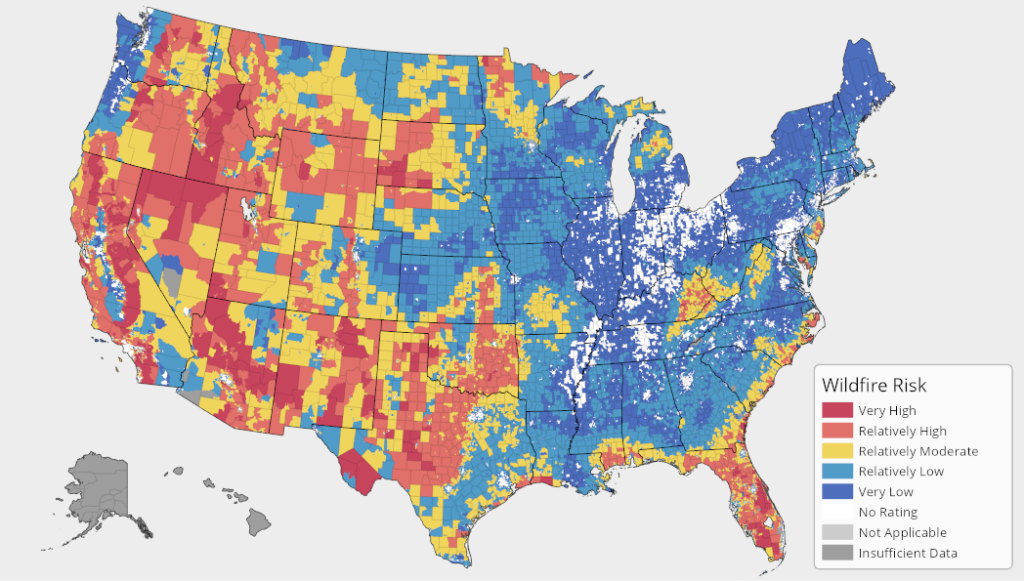
Ok I get it, what should I do to prepare?
- Pay attention to the conditions in your area.
- Prepare your home.
- Prepare to evacuate.
- Make an emergency contact list.
1. What should I be keeping an eye on?
- Be alert during excessive heat and dryness.
- Watch the weather forecast for dry lightning or thunderstorms.
- Pay attention to holiday activities like the 4th of July fireworks.
- Any ‘really smart’ people doing any of the dumb things mentioned earlier.
2. How can I prepare my home?
- Create a defensible space around your house.
- Remove dead trees and branches.
- Trim bushes.
- Rake leaves.
3. What if I have to evacuate?
Have a bugout bag
This is a duffle bag, suitcase or backpack that is packed and ready to go at all times. You may only have minutes or seconds to evacuate your home and it should be near your exit door so you can grab it on your way out. It should contain a variety of items like clothes, medicines, food, water, supplies, etc. Read my post “What’s in My Bugout Bag” to help you build yours.
Have several evacuation routes figured out
The time to figure out how you would evacuate your home is not when you have to. Long before you should determine the different routes of escape based on where the fire might be coming from. Your main route may be blocked by fire, downed trees, emergency vehicles or others fleeing their homes. Have multiple routes to safety figured to ensure you and your family get out.
4. What if I’m separated from my family or friends?
Have an emergency contact list
With smartphones being so prevalent these days most of us carry a lot of personal contact information with us already:
- Phone numbers
- Email addresses
- Social Media apps
- Texting capability
But you should also have a concise communication plan documented with important numbers, emails, insurance information, that is printed out physically and stored in your bugout bag.
Why do I need this?
Well as great as smartphones are, what happens if in the rush to leave…
- You forget it?
- You drop it, and it breaks?
- You lose it in the evacuation?
- It gets stolen at the shelter you go to?
- You run out of charge with no way to recharge it for a bit?
Get the picture now?
I don’t know about you, but smartphones have made me dumber. I don’t remember phone numbers or email addresses anymore. Since the device does it for me, I don’t need to. Without my smartphone, I wouldn’t be able to reach out to anyone, even if someone lets me borrow their phone.
A one-page contact information sheet with all the important information you would need can fill this gap.
Summary
A wildfire can be a scary and very life disrupting event. Taking a little time now to prepare can alleviate some of that disruption and help you get back to a new normal quicker than if you were not prepared.
More Resources
Ready.gov: This website has additional information to help you not only prepare for wildfires but any other disaster you may face where you live. I’ve included their wildfire quick reference for you to download.
Fire and Smoke Map (airnow.gov)
#FireMappers 3.0 Wildfire Early Notification Web App – 320280 (arcgis.com)
Cal PreP – Fire Awareness Map – 7 day Fire Outlook (arcgis.com)
Last Updated on March 30, 2023
